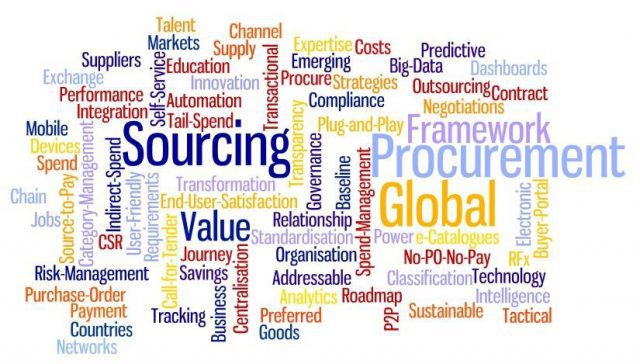What Is Strategic Sourcing? – Definition

An organization can take advantage of its consolidated purchasing power and use that to find the best value in the marketplace as well as align its purchasing strategy to meet the business goals of the organization by using strategic sourcing, an approach to supply chain management that formalizes the way information is gathered and used.
In the context of digital transformation, procurement and supply chain processes are evolving as a result of strategic sourcing, and the trend is poised to continue. In order to accomplish this goal, it is necessary to analyse what an organization purchases, from whom, at what price, and in what volume. With strategic sourcing, the emphasis is placed not just on the initial price of the product, but on the total cost of ownership of the product by analysing the market continuously and through the building of relationships with suppliers, and by optimizing the sourcing process. This is what differentiates strategic sourcing from conventional purchasing.

How Does Strategic Sourcing Work?
With strategic sourcing, businesses are able to reduce their short-sightedness and focus on price in their procurement processes in order to make them more efficient. It is through creating a sourcing plan, however, they will be able to develop a flexible system that will have a long-term impact on the overall value of their operations. In order to make a decision about how to choose suppliers, it is first necessary to assess the business needs and historical expenditure, then to outline a strategy, and finally to collect and analyze data in order to identify the best suppliers.
Strategic sourcing requires not only the selection of suppliers and tenders to take place but also the ongoing measurement and improvement of the process once these processes have been completed. Large organizations with a large number of suppliers are usually the ones who practice strategic sourcing. It is possible to delegate the function of strategic sourcing to an outsourcing provider in case an organization wishes to do so.
What Steps Are Included In Strategic Sourcing?
Step 1: Evaluate Your Spend Category
Step 2: Supplier Analysis
Procurement needs market analysis so that it can understand how the supply market works, where it’s going, how competitive it is, and who the key players are in the market. Through this analysis, buyers can improve the strategy and tendering process, and align their behavior to achieve a better value-for-money, a lower price, and better service.
Step 3: Develop a Strategic Sourcing Strategy
Step 4: Choose Your Strategic Sourcing Process
A request for proposal is a document that asks potential suppliers to submit business proposals as part of a bidding process for the procurement of a commodity, service, or valuable asset by an agency or company
For more information:
What is a Request for information (RFI)?
Step 5: Negotiate With Selected Suppliers
It’s easier to find the right suppliers when you have a team that knows what you’re buying.
Negotiate the best terms (remember its not always about pricing) such as payment terms, rebates etc.
Step 6: Supplier Integration
Step 7: Measuring Performance & Results
What Are The Benefits Of Strategic Sourcing?
A strategic sourcing process has the obvious benefit of reducing total costs, but it can also have a range of other benefits that are not as obvious, such as reducing risks. It is becoming increasingly apparent that procurement has the potential to undergo significant changes as businesses start to leverage the vast amount of data that is available to them and digitize business processes.
Having a better understanding of the markets in which suppliers operate, the more likely businesses are to be able to identify potential risk factors and develop ways to mitigate them through their sourcing strategies. A supply chain that emphasizes continuous improvement as well as sustainability provides added flexibility and gives it the ability to adapt to changes in external factors due to the focus on continuous improvement.
In order for a business to succeed, a strategic sourcing plan is a key component for achieving a number of goals. The following are some examples of what can be done:
- By choosing areas where goods are readily available to be sourced in, and where there are easy roads to transport them, one can manage both the environmental conditions and logistics;
- Choosing certified components is one of the most effective ways to ensure compliance with regulatory guidelines;
- In order to contribute to the sustainability of the business, Fair Trade or other products which have been produced or grown sustainably should be selected;
- As part of these efforts, suppliers are being encouraged to diversify their locations and create contingency plans for those who are in volatile areas so as to mitigate geopolitical instability.
- minimizing risk by introducing secondary and alternative suppliers
Strategic Sourcing In Procurement
In order for businesses to acquire products and services on a regular basis, procurement means a range of activities and procedures. In e-procurement, the procurement department often focuses on the day-to-day processes that are involved in capturing and managing the interests of buyers, sellers and payers, such as purchase orders, invoices and payments, even though this technically involves both strategic and administrative responsibilities.
Strategic sourcing on the other hand focuses on the activities that occur prior to the actual purchase, including the analysis of the company’s needs as well as the market as a whole. Strategic sourcing can be seen as a different approach from procurement in that it incorporates a wider perspective, leveraging big data sets and assessing the value of factors, such as vendor relationships that have a positive impact on the company and reduced risk throughout the process.

